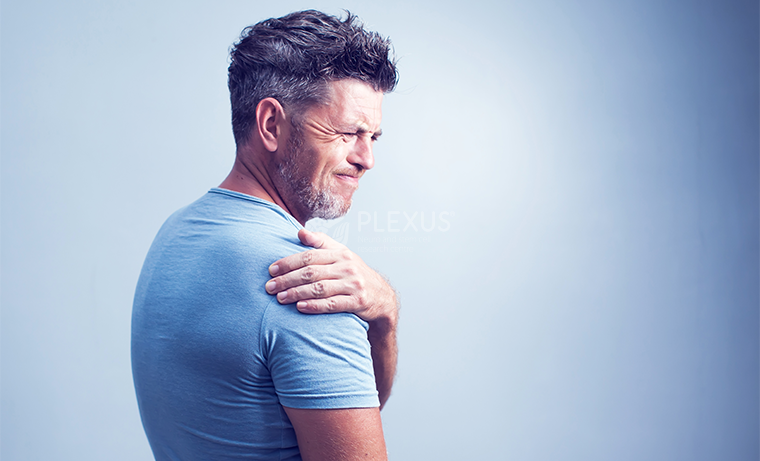
Mr. K, a 42 year old software engineer was diagnosed with this devastating neurodegenerative disorder in March, 2017. The first sign he observed was not being able to clip his finger nails using a nail clipper which was followed by slow onset of pain in the right shoulder. As days melted into months, his disability went on increasing and mundane daily activities like dressing and bathing became difficult. He was unable to lift his right shoulder, there was severe weakness and pain on movement. He also noticed that he was unable to rotate his forearm, meaning that he was not able to place his hand with the palm facing the roof. The weakness went on progressing to the other extremities as well and started affecting his walk. He went for multiple consultations and underwent various neurological examinations where he was diagnosed with Amyotrophic Lateral Sclerosis, a motor neuron disease that causes the death of neurons controlling the voluntary muscles.
He came to Plexus in March, 2019 with difficulty in walking and severe pain and weakness in his upper limbs. His main complaint was not being able to use his hands for his daily activities. A thorough examination was carried out which revealed that the extent of the problem was much more than it appeared to be. Being a neurodegenerative condition, the disease had progressed to a great extent. There was not only weakness but also severe tightness in all his joints. He was inducted into the Regenerative Medicine program which included Cell therapy along with various custom-made rehabilitative programs to relieve him from his concerns. The goal of Regenerative Medicine in this case is to stop or slow down the disease progression. He underwent a custom made treatment program comprising of physiotherapy that focused on relieving his joint pain and stiffness, improving the strength of his lower limbs and improve walking; occupational therapy that focused on the hand functions to help improve his ability to perform his daily life activities and speech therapy to strengthen his oral structures and improve his breathing and swallowing as a preventive measure. He was also provided with a customized splint that focused on his thumb drop and helped in attaining an active grip.
After a period 45 days of undergoing treatment, it was seen that he was able to perform all his daily activities independently. He was able to grip objects of varied sizes including the fine objects which were impossible to grip when he enrolled into the treatment; pain and tightness in the arms disappeared and his walking improved. Being a progressive neurodegenerative condition, it was a herculean task to tackle the disease at this stage but results were overwhelming for both the patient and the treating team. The videos show a comparison between his clinical state at the time of enrollment into the program and at the completion of the treatment.










